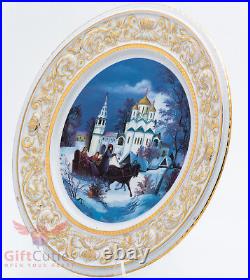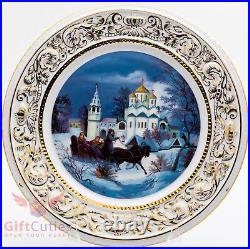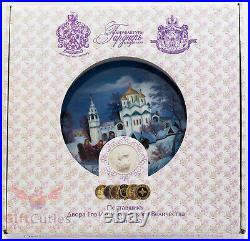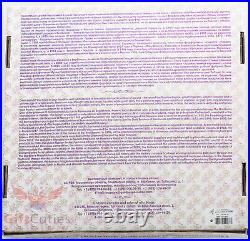Russian imperial Gardner Verbilki porcelain decorative wall plate Winter Troika






Verbilki decorative plate painting via overglazed decal and frame is handpainted with gold. Handmade in Russia comes with the cartoon box. Founded at Verbilki, near Moscow, by the Englishman Francis Gardner in 1766, and known for its hard paste porcelains, the Gardner factory served as important competition for the Imperial Porcelain Factory, spurring artists at both institutions to produce more complicated wares in terms of both form and decoration.
One of two porcelain works in Russia during the 18th century, The factory was situated in the Gjelsk region where local clay, which proved suitable for porcelain, could be used. Gardner started with a German manager called Gattenberg, who later joined the Imperial Factory, and he employed a well-known German painter, Kestner. But these and other foreigners taught many Russian craftsmen, principally serfs, who gradually replaced them, as soon as they had mastered the various techniques; so that the number of foreigners employed in key positions steadily diminished in course of time.
The factory was operated by the family for three generations until 1891, when it was taken over by Kusnetzoff. The Gardner Factory made lesser quality wares for export and higher quality pieces for the capital trade. In 1777 the Empress Catherine teh Great commissioned the Gardner Factory to produce four dessert services for the receptions held in the Winter Palace. Each service included plates, round and long leaf-shaped dishes, baskets of various sizes for fruit, and a variety of ice cups. Among its other notable works were colored figurines of Russian subjects in unglazed biscuit porcelain. Gardner porcelain had a wide variety of marks in the 140 years of its existence. Different shapes of the Latin letter G, painted underglaze in blue or black, were most frequent in the late eighteenth and early nineteenth centuries. Occasionally the mark is similar to the Meissen crossed swords with a star. In the first quarter of the nineteenth century the full name of the factory, impressed either in Cyrillic or Latin characters, becomes more frequent.In the second half of the nineteenth century the mark is usually the Moscow St George and Dragon crest, surrounded by a circle, bearing the full name of the factory, at first impressed, and later painted in green or red. In the last decades of the factory's existence the double-headed eagle was added to the design, and this elaborate mark continued after the Gardner firm had been absorbed by Kuznetsov.
